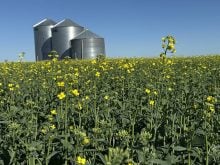Given how little Prairie grain farmers expect to get for their wheat, they didn’t need the bloody nose they got on canola Sept. 3.
The sector was already braced by the time China announced its anti-dumping probe into Canadian canola. Our government had set a 100 per cent tariff on Chinese electric vehicles and a further 25 per cent tariff on Chinese steel and aluminum in late August, both effective in October. Many figured retaliation was imminent.
As John Greig, Glacier FarmMedia’s senior editor for Ontario, livestock and technology posted on X, China’s sudden scrutiny of Canadian products wasn’t surprising. “The only question was whether it would be canola or pork.”
Read Also

The new spin on farm legacy
Farmers are starting to think differently about the future of their farms in Western Canada. What does this mean for the next generation and farm succession planing?
China has massive market power. It has a consumer base of more than 1.4 billion people, the second most populous country in the world, and a 2022 gross domestic product of almost US$18 trillion, according to the World Bank.
Over and over again, China has proven its willingness to use that economic weight through strong-arm tactics in diplomacy and trade.
Ripples from the last Canada-China canola debacle, in which China cut canola seed shipments from Richardson and Viterra in 2019, have barely had time to dissipate. Restrictions only lifted in May 2022. Analysis from the Canola Council of Canada put lost sales from March 2019 to August 2020 between $1.54 billion and $2.35 billion.
China said the move was due to phytosanitary concerns. Most people on this side of the ocean maintain it was retaliation against the detention of Huawei executive Meng Wanzhou on a U.S. warrant.
Another analog includes China’s three years of anti-dumping tariffs against Australian barley. In that case, China took exception to a call from Canberra for an international investigation into the origins of the COVID-19 pandemic. China announced trade barriers on a long list of Australian products, including a whopping 80.5 per cent anti-dumping tariff on barley.
Not until a new Australian government made overtures to China did that the relationship start to thaw. The dispute was dropped last year.
Today, the barley is flowing, but if you were an Australian barley grower in 2020, you woke up one day to find that your greatest market had evaporated overnight.
A February 2021 article, industry group Grain Trade Australia noted that about 70 per cent of Australian barley at the time was exported, and about 58 per cent went to China.
“There is no ‘silver bullet’ solution to replace the lost barley demand from China,” wrote author Pat O’Shannassy. “The China barley market was based on the development of strong customer relationships, specific varieties marketed for certain products and the premium prices paid by customers.”
But as media outlets reported after tariffs were lifted, Australian did diversify its market. Farm groups noted the rise of customers in Mexico and Saudi Arabia to help staunch the bleeding.
China’s latest move against Canadian canola stings. It’ll sting more if the investigation results in real trade barriers. But some of the current pain is likely more a commentary on the fickleness of markets than real issues with canola demand. Canadian canola has other markets —analysts are pointing to places like Japan, Mexico and Europe — and other robust opportunities are likely to develop.
In February, Co-operator reporter Don Norman noted the excitement the canola sector had around biofuels. An executive from the Canadian Oilseed Processors Association at the time expected “unprecedented” growth in canola demand from that avenue. He expected domestic crush could jump from 11.3 million tonnes to 18 million in the next few years.
In a recent interview with the Western Producer’s Sean Pratt, Chuck Penner, analyst with LeftField Commodity Research, said Canadian canola is far less of an export game than it used to be, and the market might have more solid footing than the sudden drop in canola prices implies.
That’s cold comfort to farmers watching prices plummet as they harvest their new crop, and it doesn’t excuse a federal government that is propping up the vehicle industry at the expense of Canadian farmers. But necessity is the mother of invention, and if this latest blow lights a fire under efforts to develop emerging markets, all the better.
We were headed there anyway, and the result may be a more resilient canola industry.
















